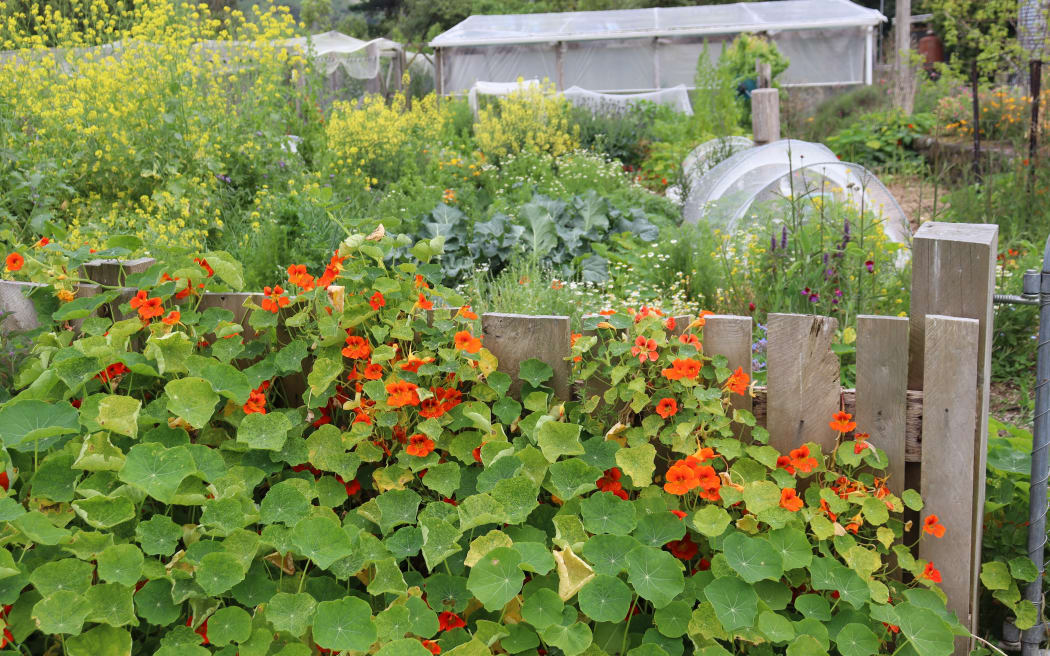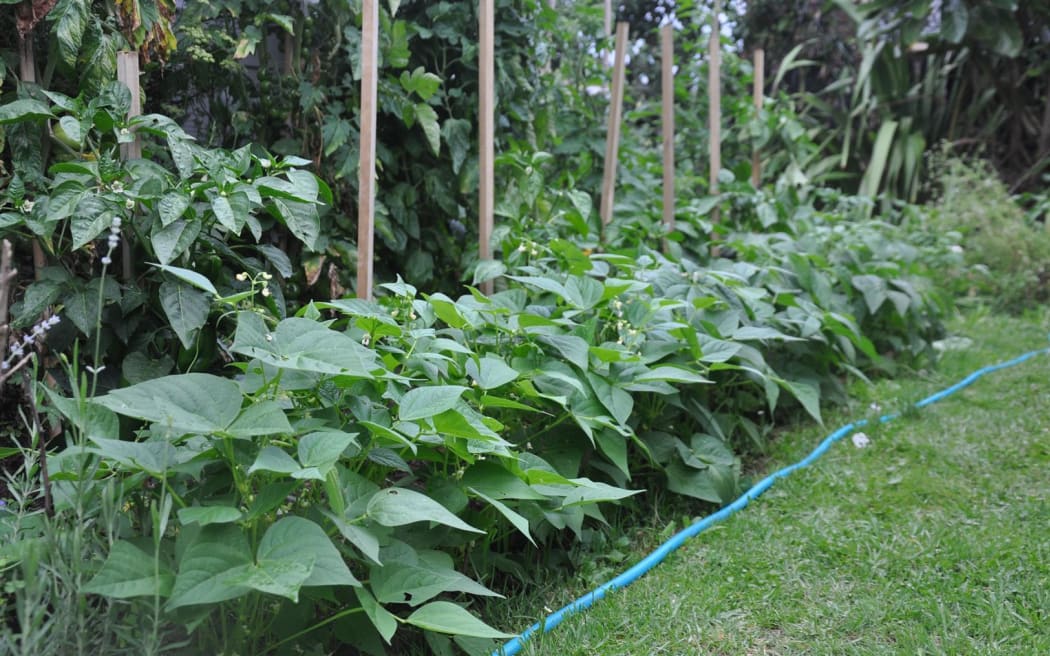With summer just around the corner you might want to start thinking about planting new crops in your vegetable garden.
Organic gardener Kath Irvine says now’s the best to plant things like squash, citrus and beans.
She chats to Kim Hill from her permaculture home garden in Ōhau, in Horowhenua.

Kath's vegetable patch Photo: Kath Irvine
How do you know if your soil is warm enough to plant? Put your hand in it, Kath says.
If you’re into gadgets, you can grab a soil thermometer and if the soil is about 18 degrees, you’re good to go for heat loving crops.
If your soil is nice and warm, it’s time to plant pumpkins, Kath says. You’ll get good results without a lot of work.
Pumpkins grow throughout summer, and you’ll be able to harvest them in autumn.
In the beginning don’t worry about pruning them back , Kath says, just let your pumpkins grow and they’ll cover quite a bit of ground. You can plant crops in the spaces between the leaves.
“They’re a wonder crop because you can plant them and as long as you have good compost, they really don’t need a lot else – a little bit of encouragement with pollination perhaps.”
To help with pollination, have a mixed green crop on the bed already, Kath says, something like lupin or marigolds to bring in the beneficial insects. Then “dollop some compost” into the little pockets in between and plant pumpkin into that.
“What you’re doing in there, you’re reaching fertility from a few different viewpoints, the most fertile garden has lots and lots of roots in it. So, if you can fill it up with a diversity of roots...you develop this explosion of soil life beneath.”
Root diversity provides your garden with immunity, disease protection and fertility, she says.
Where possible, leave roots in the ground. If you chop back a lettuce and leave the roots in the soil, for example, Kath says you’ll perpetuate strong soil biology.
Beans
You can get a lot of produce from beans for very little work, Kath says.
“If you’ve been put off by beans you buy in bulk bins and you cook them up and think they’re horrible, well, they are – your home-grown ones are so good, they’re very creamy and delicious.”
Plantings can be scattered between now and January to get a continuity of supply, she says.
Dwarf beans are great for windy sites, but they have a quick turnover, and all arrive at once. You’ll need to sow a new row once a month.
For climbing beans, Kath says in Levin she’s able to plant one crop now and another in December.
But, she says, “There’s only so many beans you can eat...unless of course you’re going to freeze them.”

Beans growing in the foreground with tomatoes and capscium behind Photo: file
Shell-out beans, like black beans or broad beans, are the ultimate do-nothing crop, she says.
Once their shells have gone dry, you pop one out and test it to see if it’s rock hard. If it is, they’re ready to come out.
“You just sit there, pop them all out and chuck them into a jar and that is it,” she says.
“If you can be in your garden little and often, that really is the best thing. There’s an old saying, the best fertiliser is the footsteps of the farmer.”
Fungal infections
Kath puts a lot of stores into having what she calls a “living biological environment”.
“That is the diversity of roots...to build and foster a really big soil biology.”
However, sometimes you may notice a fungal disease like plant rust show up in your garden.
Rust is an alignment of moisture and temperature – there's not a lot that can be done about it, Kath says.

Photo: Catherine Cattanach
There are biological fungicides available, targeted to specific strains of rust.
They may be hard to get your hands on but they’re worth it, she says.
“All of the fungicides on the market, which are not biological, the plants are all becoming resistant to them.”
Biological fungicides are a living product, she says.
Milk is surprisingly amazing for fungal infections. You dilute milk with water - Kath uses a 50/50 mix – and sprays it on. “It’s a bit whiffy if you use 100 percent.”
You then break off the worst affected leaves every now and then, she says.
If you have rust at this time of year, break off foliage where you can, keep your soil covered – ideally with plants – and pile mulch on.
Kath Irvine’s practical guide to growing organic fruit and vegetables, The Edible Backyard was published last year.

